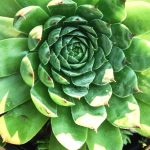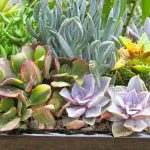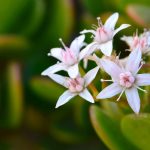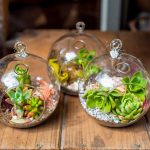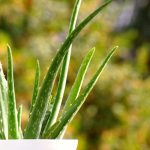Unsure if your succulents will handle excessive sunlight well? Despite their love for the sun, too much of it can harm succulents. Gardening expert Paige Foley explores the repercussions of overexposure to sunlight on these plants.
The Impact of Excessive Sunlight on Succulents
Succulents thrive in the sun, yet finding the perfect balance can be challenging. While lower light conditions may cause them to grow pale and thin, intense sunlight can lead to irreversible damage, such as sunburn or sunscald, on their leaves.
Short Answer
Succulents subjected to excessive sunlight can suffer discoloration and eventual death. Commonly known as sunburn, this damage manifests as brown, black, or red patches on the plant, which, when addressed promptly, can result in regrowth. Each succulent variety has varying light requirements, with some needing low light levels, while others thrive in direct sunlight.
In-Depth Analysis
Though renowned for their ease of care, succulents are not immune to the harmful effects of excessive sunlight. If exposed to intense light, their leaves can quickly deteriorate. However, with timely intervention, sunburn can be managed, underscoring the importance of understanding the specific needs of each succulent variant.
Direct vs. Indirect Sunlight
The distinction between direct and indirect sunlight is crucial in determining the optimal placement for succulents, whether indoors or outdoors. Direct sunlight, characterized by unfiltered and intense light, can lead to sunburn, while indirect sunlight, although still bright, offers a milder alternative for plant health.
Factors That Contribute To Sunburn
Several factors can contribute to succulent sunburn, resulting in visible discoloration and damage. By understanding the light requirements of your succulents and providing the appropriate environment, you can effectively mitigate the risk of sunburn and ensure the well-being of your plants.

Surprisingly, succulents can suffer from sunburn due to factors beyond just direct sunlight. Research indicates that excessive sun exposure can actually impede photosynthesis when coupled with other environmental stressors.
While sunlight plays a crucial role, various other elements can contribute to a succulent’s susceptibility to sunburn. A combination of elevated temperatures, dry soil, and intense light can induce considerable stress, leading to sunburn issues.
Temperature
Despite their tolerance for high temperatures, succulents can still experience sunburn when exposed to excessive heat in conjunction with sunlight or dry soil. Plants generally thrive in temperatures ranging between 50 to 60 F, with ideal conditions falling between 60 to 80 F, depending on the species. However, during the summer months, temperatures often soar past 80 F, necessitating extra attention and care.
Water
Another critical factor to monitor is the watering regimen. While succulents prefer drier soil, drought conditions combined with high temperatures and intense sunlight can spell trouble. During warmer periods, it’s vital to water succulents regularly to prevent stress.
Succulents retain much of their water reserves in their leaves, and well-hydrated soil keeps these leaves plump and healthy. Conversely, dry soil prompts succulents to draw water from their leaves, making them more vulnerable to sunburn. Watch your plants closely in hot weather to detect sunburn early.
Signs of Sunburn


Succulents exhibit clear indicators of stress when faced with excessive sunlight. Recognizable signs of sunburn include:
- Discolored patches on the leaves.
- Varying in color from brown, black, red, yellowish, to tan, based on the succulent type.
- Typically starting as pale patches and progressing to darker shades.
- Patches often originating at the leaf tips and extending downwards.
- Wide-leaved succulents may display damaged or discolored areas rather than just tip-burn.
- Textured patches that feel rough to the touch, unlike the smooth texture of healthy leaves.
The severity of sunscalding is often evident in the darkness of the patches, which eventually become scarred, altering the leaf’s texture. While sunburn manifestations vary among species, monitoring these discolored patches serves as an early warning system.
Indoor succulents might exhibit different sunburn symptoms than their outdoor counterparts due to filtered or indirect sunlight exposure, with symptoms like leaf yellowing or browning.
Treating Sunburn
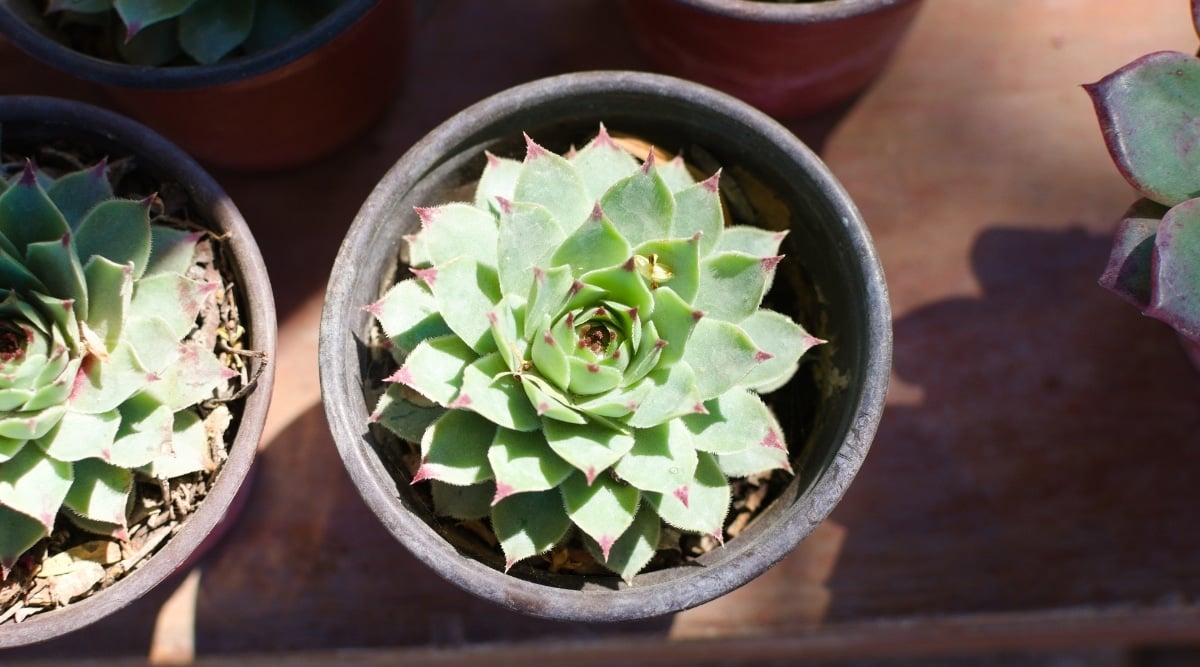

The most effective way to address sunburn is to relocate the plant to a less sunny spot. Plants typically respond positively and quickly to relocation when they receive excessive sunlight.
Gradually Adjust Light Exposure
Opt for a spot that offers less direct sunlight or intermittent shade during the day. It’s advisable to make light exposure adjustments gradually rather than abruptly changing conditions.
Understand Your Specific Succulent Variety
For optimal care of your succulents, it’s essential to understand their specific light requirements. Some varieties like haworthia or kalanchoe thrive in low-light conditions, while others such as hens and chicks and echeveria prefer bright, direct sunlight.
Act Quickly
In case of sunscald, prompt action is necessary. Failure to relocate your succulent may result in worsening sunburn, potentially leading to the plant’s demise. Early intervention increases the chances of the succulent recovering from sunburn.
Remove Damaged Leaves
If your succulent’s leaves are severely sun-damaged, consider removing them to aid in the plant’s recovery process. By eliminating extensively sunburned leaves, you can redirect the plant’s energy towards healing and growth.
Outdoor Plants
When dealing with sunburn in outdoor succulents, offering shade is crucial if relocation is not feasible. Utilize taller plants or shade cloth to protect your succulents during the hottest part of the day, ensuring their well-being.
Final Thoughts
To prevent sunburn, take proactive measures by adjusting sunlight exposure or providing shade as needed. Remember, factors like temperature and soil moisture also influence sunburn development. Swift action can help your succulent recover, but severe cases may lead to irreversible damage.
It’s advisable to select a location with indirect sunlight or partial shade throughout the day. Gradual changes in light exposure are preferred over sudden shifts for optimal succulent health.

